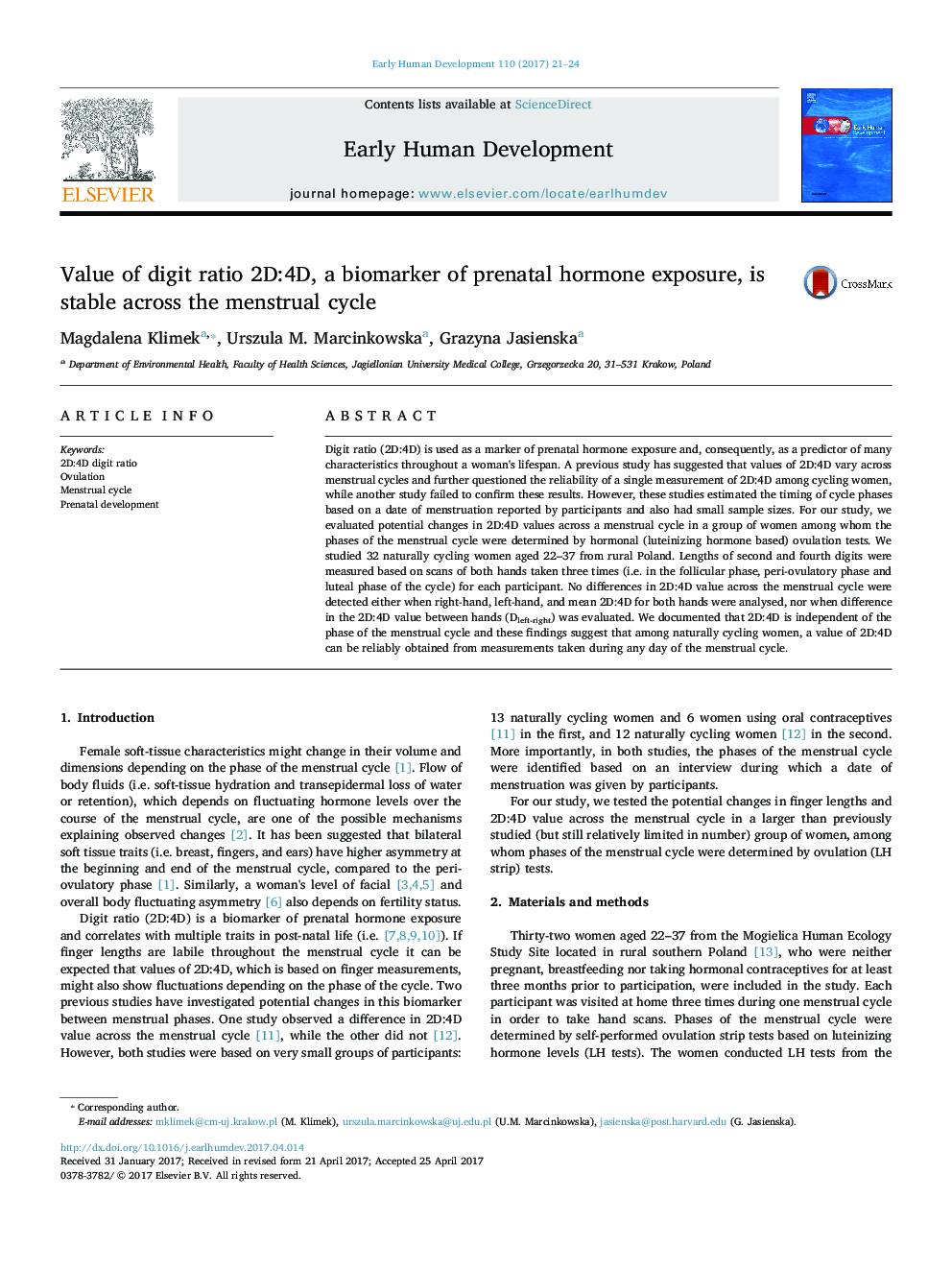| Article ID | Journal | Published Year | Pages | File Type |
|---|---|---|---|---|
| 5691094 | Early Human Development | 2017 | 4 Pages |
Abstract
Digit ratio (2D:4D) is used as a marker of prenatal hormone exposure and, consequently, as a predictor of many characteristics throughout a woman's lifespan. A previous study has suggested that values of 2D:4D vary across menstrual cycles and further questioned the reliability of a single measurement of 2D:4D among cycling women, while another study failed to confirm these results. However, these studies estimated the timing of cycle phases based on a date of menstruation reported by participants and also had small sample sizes. For our study, we evaluated potential changes in 2D:4D values across a menstrual cycle in a group of women among whom the phases of the menstrual cycle were determined by hormonal (luteinizing hormone based) ovulation tests. We studied 32 naturally cycling women aged 22-37 from rural Poland. Lengths of second and fourth digits were measured based on scans of both hands taken three times (i.e. in the follicular phase, peri-ovulatory phase and luteal phase of the cycle) for each participant. No differences in 2D:4D value across the menstrual cycle were detected either when right-hand, left-hand, and mean 2D:4D for both hands were analysed, nor when difference in the 2D:4D value between hands (Dleft-right) was evaluated. We documented that 2D:4D is independent of the phase of the menstrual cycle and these findings suggest that among naturally cycling women, a value of 2D:4D can be reliably obtained from measurements taken during any day of the menstrual cycle.
Related Topics
Health Sciences
Medicine and Dentistry
Obstetrics, Gynecology and Women's Health
Authors
Magdalena Klimek, Urszula M. Marcinkowska, Grazyna Jasienska,
